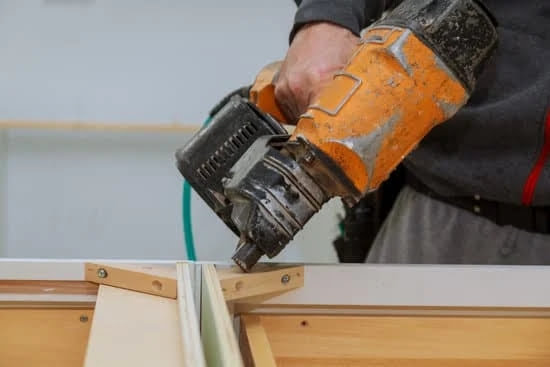What is a chisel used for in woodwork? Chisels are essential tools in woodworking, serving various purposes like carving, shaping, and cutting wood with precision. These versatile hand tools have been instrumental in woodworking for centuries and continue to be a staple in any woodworker’s toolkit.
Chisels have a rich history that dates back to ancient civilizations, where they were crafted from stone or bronze for various woodworking tasks. Over time, chisels have evolved into different shapes and sizes to cater to the diverse needs of woodworkers. From delicate detail work to heavy-duty chopping, chisels come in a wide range of designs to accommodate different woodworking projects.
Understanding the components of a chisel is crucial for using it effectively. Comprising of a blade attached to a handle, knowing how each part functions can help ensure safe and precise use of the tool. Learning how to properly use a chisel through techniques like paring, mortising, and pairing will not only enhance woodworking skills but also improve efficiency and accuracy in shaping wood.
History of the Chisel
The history of the chisel dates back to ancient civilizations where it was used as a fundamental tool for woodworking. The earliest chisels were made of stone and were essential in carving out intricate designs and shapes in wood. Over time, as metalworking skills evolved, chisels began being crafted from metals such as bronze and iron, making them more durable and efficient for woodworking tasks.
One significant development in the history of the chisel was during the industrial revolution when mass production techniques allowed for chisels to be manufactured on a large scale. This made chisels more accessible to woodworkers of all skill levels, further solidifying its importance in woodworking practices. With advancements in technology, modern chisels are now made from high-quality steel alloys that ensure sharpness and durability over extended periods of use.
The evolution of the chisel has been driven by the need for precision and efficiency in woodworking projects. Today, there are various types of chisels available, each designed for specific tasks such as paring, mortising, carving, and shaping wood. Woodworkers can choose from a wide range of chisel sizes and shapes to suit their individual needs, making this essential tool a versatile and indispensable component in any woodworker’s toolkit.
Types of Chisels
Chisels come in a variety of shapes and sizes, each designed for specific woodworking tasks. One of the most common types is the bench chisel, which has a flat blade and is used for general chopping, paring, and detail work. Another popular type is the mortise chisel, which has a thick blade to withstand heavy pounding and is commonly used for making mortises in woodworking joints.
For finer detail work, woodworkers often turn to the carving chisel. These chisels have smaller blades and are specifically designed for intricate carving and shaping of wood. Additionally, there are specialized chisels such as firmer chisels with beveled edges for cleaning out corners, pairing chisels with thin blades for precise cuts, and gouges with curved blades for creating intricate designs.
It’s crucial to choose the right type of chisel for the task at hand to ensure precision and efficiency in woodworking projects. Understanding what each type of chisel is used for in woodwork will help craftsmen select the appropriate tool that best suits their needs. Whether you’re working on a simple repair job or an elaborate carving project, having the right chisel can make all the difference in achieving professional results.
| Types of Chisel | Common Use |
|---|---|
| Bench Chisel | General chopping, paring, detail work |
| Mortise Chisel | Making mortises in woodworking joints |
| Carving Chisel | Intricate carving and shaping of wood |
| Firmer Chisel | Cleaning out corners with beveled edges |
Components of a Chisel
A chisel is a simple yet versatile tool that consists of several key components, each playing a crucial role in its function and effectiveness in woodworking. Understanding the different parts of a chisel is essential for woodworkers looking to make the most out of this tool. Here is a breakdown of the components that make up a chisel:
- Blade: The blade of a chisel is arguably the most important part of the tool, as it is responsible for cutting and shaping wood. It typically has a sharp edge that allows for precise carving and detailing.
- Handle: The handle of a chisel provides the user with grip and control over the tool while working on wood. Handles come in various materials such as wood, plastic, or metal, depending on personal preference.
- Ferrule: The ferrule is the metal band that secures the blade to the handle, ensuring stability and preventing any wobbling during use.
- Tang: The tang is the portion of the blade that extends into the handle, providing added strength and durability to the overall structure of the chisel.
Knowing these components can help woodworkers choose the right chisel for their specific needs based on factors such as blade material, handle design, and overall construction. Additionally, understanding how each part contributes to the functionality of the chisel can also aid in proper maintenance and care to prolong its lifespan.
Whether you are a beginner or an experienced woodworker, having knowledge about what makes up a chisel is essential in utilizing this tool effectively in various woodworking projects. By familiarizing yourself with these components, you can make informed decisions when selecting chisels for specific tasks based on their design features and performance capabilities.
How to Properly Use a Chisel
When it comes to woodworking, understanding how to properly use a chisel is essential for achieving precise and clean cuts on your projects. Whether you are a beginner or an experienced woodworker, mastering the art of chiseling can elevate the quality of your work. Here is a step-by-step guide on using a chisel safely and effectively:
- Choose the right chisel: Selecting the appropriate chisel for the task at hand is crucial. Different types of chisels are designed for specific woodworking tasks, such as paring, mortising, or carving. Make sure the chisel is sharp and in good condition before beginning.
- Secure your workpiece: Before using a chisel, ensure that your workpiece is firmly secured in place. This will prevent any movement that could lead to accidents or imprecise cuts. A bench vise or clamp can help keep the piece steady while you work.
- Hold the chisel correctly: Grip the chisel firmly with one hand close to the blade and use your other hand to guide and apply pressure. Keep your fingers away from the cutting edge to avoid injuries. Use a mallet or hammer to tap on the chisel lightly for controlled cuts.
Proper technique and control are key when using a chisel in woodworking. By following these steps and practicing precision and patience, you can achieve professional results in your projects. Remember to always prioritize safety by wearing protective gear such as goggles and gloves when working with sharp tools like chisels.
Common Woodworking Projects That Require Chisels
Woodworking projects often require the use of various tools to shape, carve, and create detailed designs on wood. Chisels are one of the indispensable tools that come in handy for a wide range of woodworking projects. These versatile tools have been used for centuries and continue to play a crucial role in woodworking due to their precision and versatility.
One common woodworking project that requires the use of chisels is carving intricate designs or patterns on wood surfaces. Whether it’s creating decorative motifs on furniture, carving ornate details on wooden panels, or sculpting figurines, chisels are essential for achieving fine detailing and precision in woodworking projects. Woodworkers rely on different types and sizes of chisels to bring their creative visions to life with accuracy and finesse.
Another popular woodworking project where chisels are indispensable is joinery work. Chisels are commonly used to create clean and precise joints when constructing furniture pieces, cabinets, or other wooden structures.
Whether it’s shaping dovetails, mortise-and-tenon joints, or dado cuts, chisels are essential for achieving tight-fitting connections that ensure the structural integrity and durability of the finished piece. Additionally, chisels are crucial for cleaning up rough edges, trimming excess wood, and refining the overall finish of a woodworking project.
| Chisel Types | Common Uses |
|---|---|
| Bevel Edge Chisel | Detailing work, cleaning up joints |
| Mortise Chisel | Cutting square holes for mortise-and-tenon joints |
| Gouge Chisel | Carving concave shapes, hollowing out surfaces |
Maintenance and Care Tips for Chisels
Chisels are indispensable tools in woodworking, allowing craftsmen to create intricate details and smooth finishes in their projects. To ensure that these essential tools last for a long time and perform optimally, proper maintenance and care are crucial. Neglecting chisels can lead to dull blades, rusting, or even irreparable damage. Here are some tips on how to maintain and care for your chisels effectively.
Regular Sharpening
One of the most important aspects of maintaining chisels is keeping the blade sharp. A dull blade not only makes cutting difficult but also poses a safety hazard as it can slip off the wood easily. Sharpen your chisel regularly using sharpening stones or sandpaper to maintain its cutting edge. Additionally, honing the blade with a strop can help keep it sharp for longer periods between sharpenings.
Storage
Proper storage of chisels is essential to prevent them from getting damaged or causing harm unintentionally. Invest in a tool roll or a tool chest with dedicated compartments for your chisels to protect the blades from getting nicked or dulled when not in use. Avoid tossing them into a toolbox where they can knock against other tools or hard surfaces.
Rust Prevention
Moisture is the enemy of metal tools like chisels as it can cause them to rust over time. After each use, make sure to wipe down your chisels with an oily rag to remove any moisture and prevent corrosion. Store your chisels in a dry place away from damp environments to further protect them from rusting.
If you notice any signs of rust forming, use fine-grade steel wool and oil to remove it gently without damaging the blade. By following these maintenance and care tips, you can ensure that your chisels remain in top condition and serve you well for many woodworking projects to come.
Alternatives to Chisels in Woodworking
When it comes to woodworking, chisels are undoubtedly one of the most versatile and essential tools in a woodworker’s arsenal. However, there are instances where chisels may not be the best tool for the job, or where an alternative tool can achieve similar results. In such cases, exploring other tools that can be used in place of chisels becomes necessary to ensure efficiency and precision in woodworking projects.
Utility Knife
One common alternative to using a chisel in woodworking is a utility knife. While not as robust as a chisel, utility knives are handy for tasks that require precise cutting or trimming of wood fibers. They are particularly useful for making small details or intricate cuts that would be challenging to achieve with a chisel. Additionally, utility knives come in various blade shapes and sizes, allowing woodworkers to choose the most suitable blade for their specific project needs.
Wood Router
For tasks that involve shaping edges, grooves, or intricate designs on wood, a wood router can serve as an excellent alternative to using a chisel. Routers equipped with different bits allow woodworkers to create complex profiles and patterns on wood surfaces with speed and accuracy. Whether it’s rounding over edges or carving out dadoes, the versatility of a wood router makes it a valuable tool for enhancing woodworking projects without relying solely on chisels.
Oscillating Multi-Tool
Another versatile tool that can replace chisels in certain woodworking tasks is an oscillating multi-tool. These handheld power tools equipped with interchangeable accessories such as sanding pads, saw blades, and cutting attachments can perform various functions like cutting, sanding, scraping, and grinding on different materials including wood. For tasks that require precision cutting or detailing in tight spaces where traditional chisels may not reach easily, an oscillating multi-tool can be a practical alternative to consider.
Exploring these alternatives to chisels in woodworking allows woodworkers to broaden their toolkit and adapt their approach based on the specific requirements of each project. While chisels remain irreplaceable for many woodworking tasks, having knowledge of alternative tools expands creative possibilities and enhances efficiency in achieving desired outcomes on various woodworking projects.
Conclusion
In conclusion, it is evident that chisels play a crucial role in woodworking, serving as essential tools for shaping, carving, and detailing wood pieces. From their historical origins to the modern-day variations available, chisels have evolved to meet the diverse needs of woodworkers across different projects and tasks. Understanding the various types of chisels, their components, and how to use them properly is key to achieving precise and intricate woodworking results.
Moreover, recognizing the significance of proper maintenance and care for chisels is essential in ensuring their longevity and optimal performance. By following simple yet effective tips for keeping chisels sharp and rust-free, woodworkers can maximize the lifespan of these valuable tools. Additionally, exploring alternative tools that can be used in conjunction with or in place of chisels for specific tasks can further enhance a woodworker’s skill set and versatility in woodworking.
Ultimately, what is a chisel used for in woodwork goes beyond just shaping or cutting wood; it symbolizes craftsmanship, precision, and creativity. As demonstrated through common woodworking projects where chisels are indispensable tools, their value in any woodworker’s toolkit cannot be overstated.
Whether working on furniture-making, cabinetry, or sculpting projects, having a reliable set of chisels at hand enables woodworkers to bring their creative visions to life with finesse and accuracy. The adaptability and utility of chisels make them an indispensable tool that every woodworking enthusiast should have in their arsenal.
Frequently Asked Questions
How Do You Use a Chisel for Wood Carving?
Using a chisel for wood carving involves holding the chisel firmly and at the correct angle, then striking it with a mallet to remove material. The key is to make controlled cuts by applying pressure evenly.
What Is a Framing Chisel Used For?
A framing chisel is typically used in heavy-duty carpentry work, such as timber framing or large joinery projects. It is designed to withstand the force needed to cut and shape large pieces of wood accurately.
What Are Two Types of Work Done With a Wood Chisel?
Two types of work that can be done with a wood chisel are paring and mortising. Paring involves shaving small amounts of wood for precision work, while mortising is cutting square holes for joints like tenons to fit into securely in woodworking projects.

Hi everyone! I’m a woodworker and blogger, and this is my woodworking blog. In my blog, I share tips and tricks for woodworkers of all skill levels, as well as project ideas that you can try yourself.





